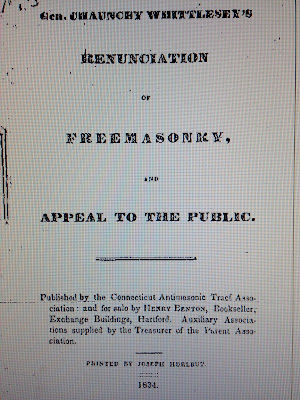New Jersey Lodge of Masonic Research and Education No. 1786 is immensely proud—we can hardly sit still!—to present Bro. Richard Berman, the 2016 Prestonian Lecturer, who will deliver his lecture titled Foundations, on Thursday, January 14, 2016.
The location, dining fee, and other necessary details are not worked out yet, but they will be publicized here and throughout social media soon. For now, please save the date.
From the publicity:
The 2016 Prestonian Lecture
Foundations: New Light on the Formation
and Early Years of the Grand Lodge of England
The 2016 Prestonian Lecture explores the evolution of Freemasonry, queries long-standing myths, and explains the factors that gave rise to the step change that occurred with the creation of the first English Grand Lodge in 1717.
Ric Berman outlines the connections between Freemasonry and the British establishment in the eighteenth century, and how and why its leaders positioned Grand Lodge as a bastion of support for the government. He also touches on how Freemasonry was used to advance Britain’s diplomatic objectives and for espionage.
The Lecture marks the upcoming 300th anniversary of the formation of the first Grand Lodge, and sets a context for 2017’s celebration.
The Prestonian Lecturer is appointed by the United Grand Lodge of England. This year’s lecturer, Ric Berman, is the author of Foundations of Modern Freemasonry, first published in 2011 and now in its second edition; Schism (2013), which discusses the conflict between Moderns and Antients Freemasonry; and Loyalists & Malcontents (2015), a history of colonial and post-colonial Freemasonry in the American South.
 |
| Richard Berman |
Dr. Berman has been a Freemason for almost 40 years. He is a Past Master of the Marquis of Dalhousie Lodge No. 1159 (EC); Treasurer of Quatuor Coronati Lodge No. 2076 (EC), England’s oldest research lodge; and a PM of the Temple of Athene Lodge No. 9541 (EC), the research lodge of the Province of Middlesex. He holds London and Provincial Grand Rank.
An extended version of the lecture is available for purchase via Amazon. The proceeds are donated to charity. Ric Berman’s Amazon page is here.
TAKE NOTE: Bro. Ric will NOT have copies of his lecture available for sale at this event. Please make your purchase from Amazon, and bring the book with you for inscribing.
Bro. Ric’s tour of the United States includes:
January 7 to 9 – American Historical Association, Atlanta,
Georgia: Chairing the session “Freemasonry – The First Global Society,” and
giving the paper “Antients or Moderns? Reflections on the Genesis of
American Freemasonry.”
Prestonian Lecture presentations:
January 9 to 10 – Greensboro, North Carolina
January 11 to 12 – Chapel Hill, North Carolina
January 13 – Des Moines, Iowa
January 14 – New Jersey (location TBD)
January 15 – Washington, DC
Of course January is early in the year, and it is not impossible Bro. Ric could return to the United States later in 2016 for more appearances.



























































































